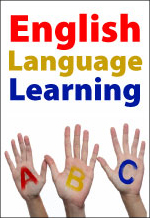Excerpted from the CE Course English Language Learning, National Center for Education Statistics (NCES) and Professional Development Resources, 2007.
The National Assessment of Educational Progress (NAEP) has tracked the achievement of Hispanic students since 1975. Although many English learners are in the Hispanic designation, English learners as a group have only recently been disaggregated in the NAEP analyses. Recent analysis of long-term trends reveals that the achievement gap between Hispanics and Whites in reading has been significantly reduced over the past 30 years for 9-yearolds and 17-year-olds (although not for 13-year-olds).
Despite apparent progress in the earlier grades, major problems persist. For instance, the 2005 achievement gap of 35 points in reading between fourth-grade English learners and non-English learners was greater than the Black-White achievement gap. And the body of scientific research on effective instructional strategies is limited for teaching English learners.
There have been some significant recent advances. Of particular note is the increase in rigorous instructional research with English learners. Districts and states have increasingly assessed progress of English learners in academic areas and in English language development. Several examples in the literature illustrate success stories among English learners—both for individual students and for schools. These students, despite having to learn English while mastering a typical school curriculum, have “beaten the odds” in academic achievement.
How can we increase the chances that more English learners will achieve these successes? To answer, we must turn first to research. Unfortunately, there has not been sufficient research aimed at understanding how to improve the quality of literacy instruction for English learners. Only about a dozen studies reach the level of rigor necessary to determine that specific instructional practices or programs do, in fact, produce significantly better academic outcomes with English learners. This work has been analyzed and reviewed by the What Works Clearinghouse.
Despite the paucity of rigorous experimental research, we believe that the available evidence allows us to provide practical recommendations about aspects of instruction on which research has cast the sharpest light. This research suggests—as opposed
to demonstrates—the practices most likely to improve learning for English learners.
Recommendation 1: Screen for reading problems and monitor progress
Conduct formative assessments with English learners using English language measures of phonological processing, letter knowledge, and word and text reading. Use these data to identify English learners who require additional instructional support and to monitor their reading progress over time.
Recommendation 2: Provide intensive small-group reading interventions
Provide focused, intensive small-group interventions for English learners determined to be at risk for reading problems. Although the amount of time in small-group instruction and the intensity of this instruction should reflect the degree of risk, determined by reading assessment data and other indicators, the interventions should include the five core reading elements (phonological awareness, phonics, reading fluency, vocabulary, and comprehension). Explicit, direct instruction should be the primary means of instructional delivery.
Recommendation 3: Provide extensive and varied vocabulary instruction
Provide high-quality vocabulary instruction throughout the day. Teach essential content words in depth. In addition, use instructional time to address the meanings of common words, phrases, and expressions not yet learned.
Recommendation 4: Develop academic English
Ensure that the development of formal or academic English is a key instructional goal for English learners, beginning in the primary grades. Provide curricula and supplemental curricula to accompany core reading and mathematics series to support this goal. Accompany with relevant training and professional development.
Recommendation 5: Schedule regular peer‑assisted learning opportunities
Ensure that teachers of English learners devote approximately 90 minutes a week to instructional activities in which pairs of students at different ability levels or different English language proficiencies work together on academic tasks in a structured fashion. These activities should practice and extend material already taught.
If you would like the full text of this publication, it is in the public domain and available at no cost at http://ies.ed.gov/ncee/wwc/pdf/practice_guides/20074011.pdf
If you would like to read this entire article and receive two hours of continuing education credit, visit Professional Development Resources at https://pdresources.org/course/index/1/1075/English-Language-Learning
More Free Resources:
- Acupuncture – An Introduction
- Attention Deficit Hyperactivity Disorder (ADHD)
- Frontotemporal Disorders
- Herbs at a Glance
- Bipolar Disorder in Children and Adolescents
- The Challenge of Co-Parenting
- Adolescent Literacy
- Domestic Violence: Child Abuse and Intimate Partner Violence
- Helping Children Learn To Listen
- Ethics and Social Media
- Children’s Exposure to Violence


